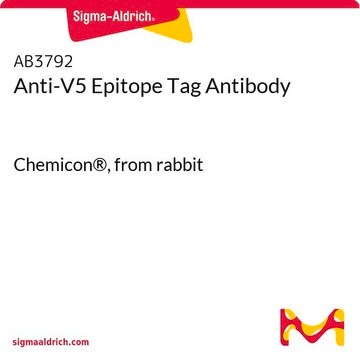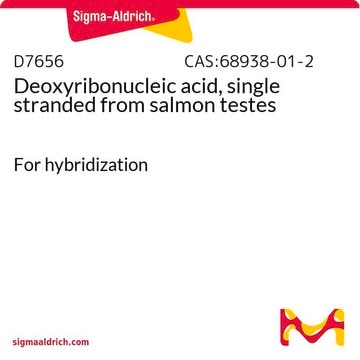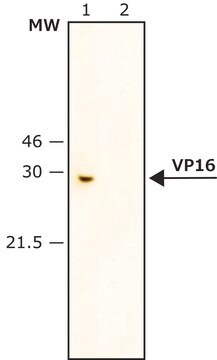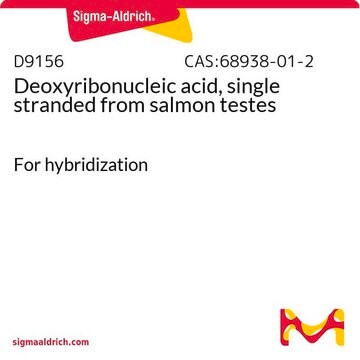V8137
Anti-V5 antibody produced in rabbit
IgG fraction of antiserum
Sinonimo/i:
Rabbit Anti-V5
About This Item
Prodotti consigliati
Origine biologica
rabbit
Coniugato
unconjugated
Forma dell’anticorpo
IgG fraction of antiserum
Tipo di anticorpo
primary antibodies
Clone
polyclonal
tecniche
immunocytochemistry: 5 μg/mL using V5 tagged fusion protein in methanol-acetone fixed transiently transfected 293T cells
immunoprecipitation (IP): 5 μg/mL using V5 tagged fusion protein from extracts of transfected cells
western blot: 2.5 μg/mL using V5 tagged fusion protein expressed in whole extracts of transfected cells
Condizioni di spedizione
dry ice
Temperatura di conservazione
−20°C
modifica post-traduzionali bersaglio
unmodified
Descrizione generale
The rabbit Anti-V5 synthetic peptide antibody reacts with V5 tagged recombinant fusion proteins expressed in transfected mammalian cells and from in vitro translation.
Specificità
Applicazioni
- immunocytochemistry
- immunoprecipitation
- western blot
Stato fisico
Stoccaggio e stabilità
Esclusione di responsabilità
Not finding the right product?
Try our Motore di ricerca dei prodotti.
Codice della classe di stoccaggio
10 - Combustible liquids
Classe di pericolosità dell'acqua (WGK)
WGK 3
Punto d’infiammabilità (°F)
Not applicable
Punto d’infiammabilità (°C)
Not applicable
Dispositivi di protezione individuale
Eyeshields, Gloves, multi-purpose combination respirator cartridge (US)
Certificati d'analisi (COA)
Cerca il Certificati d'analisi (COA) digitando il numero di lotto/batch corrispondente. I numeri di lotto o di batch sono stampati sull'etichetta dei prodotti dopo la parola ‘Lotto’ o ‘Batch’.
Possiedi già questo prodotto?
I documenti relativi ai prodotti acquistati recentemente sono disponibili nell’Archivio dei documenti.
I clienti hanno visto anche
Il team dei nostri ricercatori vanta grande esperienza in tutte le aree della ricerca quali Life Science, scienza dei materiali, sintesi chimica, cromatografia, discipline analitiche, ecc..
Contatta l'Assistenza Tecnica.














